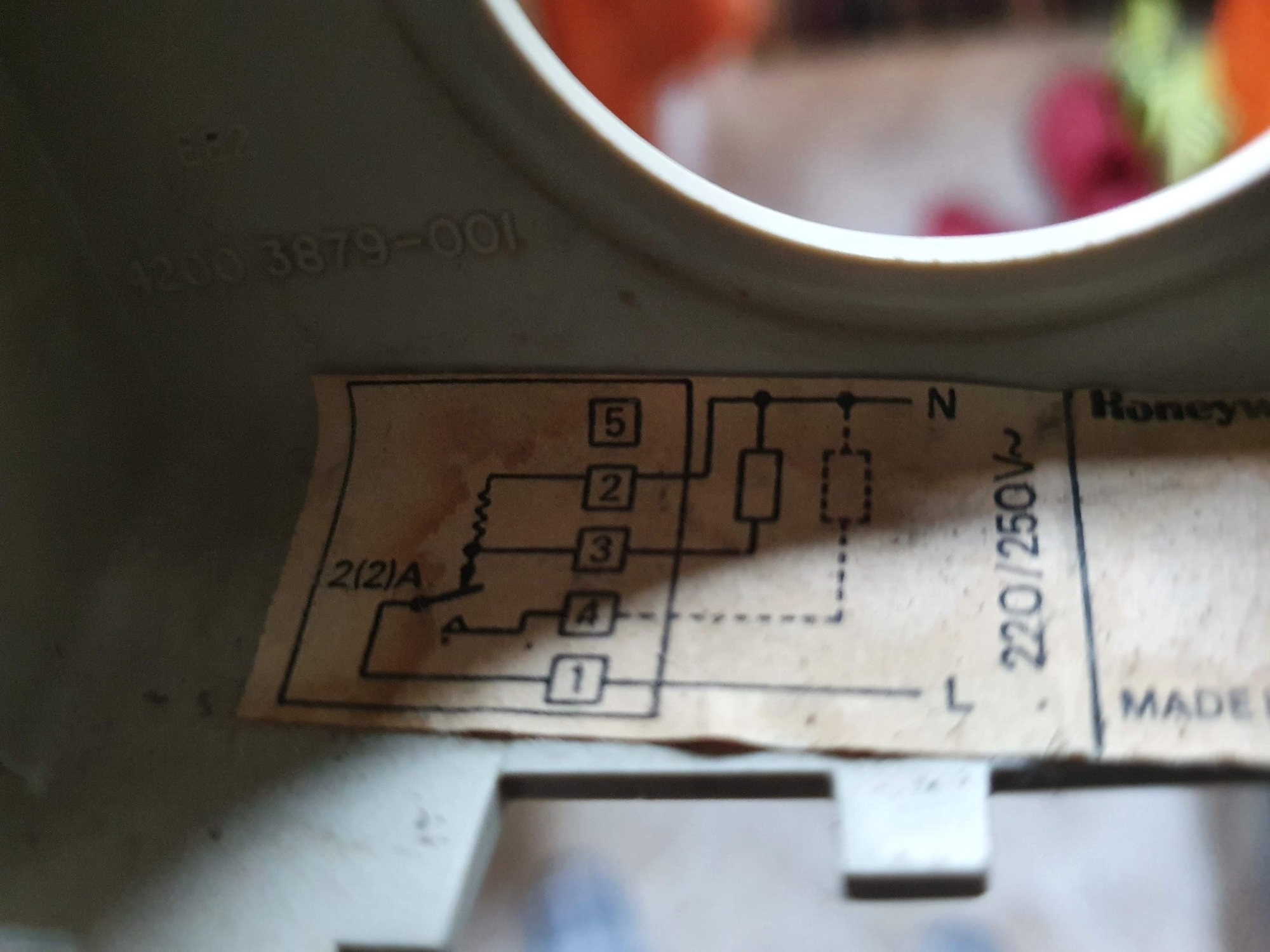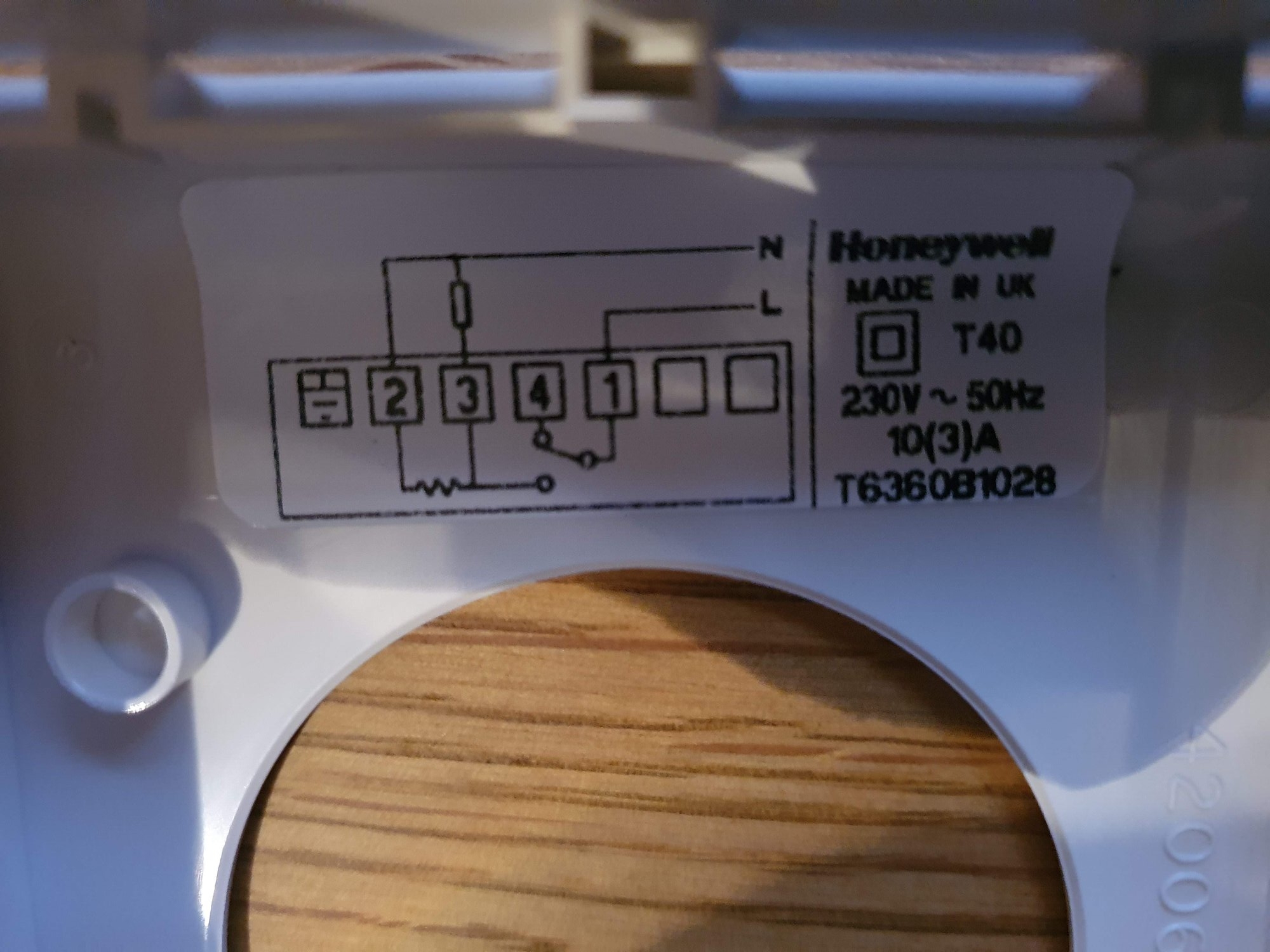I'm replacing an old Honeywell thermostat with a T6360. The old one has four wires as shown:
This is the wiring diagram for the old one:
So the terminal numbers/wire colours reading bottom-to-top are:
1: Brown
4: White
3: Green/yellow
2: Blue
The wiring diagram for the T6360 is:
This shows only three wires rather than the four I have. It seems obvious that Brown (Live) should go to terminal 1 and Blue (Neutral) to terminal 2. But I'm unclear on the other two wires, especially as the green/yellow one - which I'd normally expect to be Earth - appears not to be used as Earth here.
Given that the two units are both Honeywell, is it OK to just go with the same set-up. i.e. white to terminal 4 and green/yellow to terminal 3?
This is the wiring diagram for the old one:
So the terminal numbers/wire colours reading bottom-to-top are:
1: Brown
4: White
3: Green/yellow
2: Blue
The wiring diagram for the T6360 is:
This shows only three wires rather than the four I have. It seems obvious that Brown (Live) should go to terminal 1 and Blue (Neutral) to terminal 2. But I'm unclear on the other two wires, especially as the green/yellow one - which I'd normally expect to be Earth - appears not to be used as Earth here.
Given that the two units are both Honeywell, is it OK to just go with the same set-up. i.e. white to terminal 4 and green/yellow to terminal 3?





